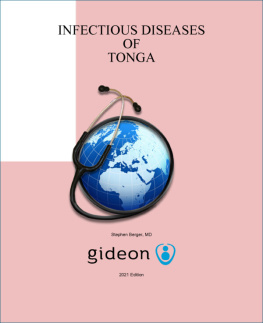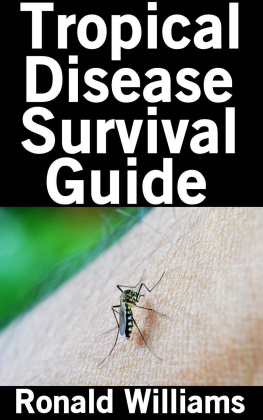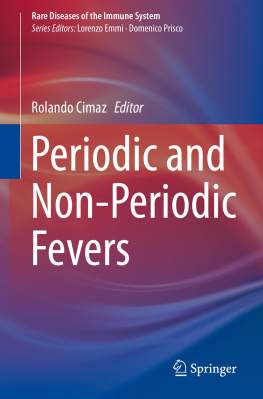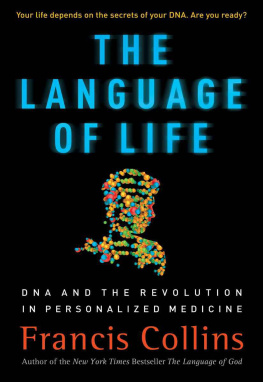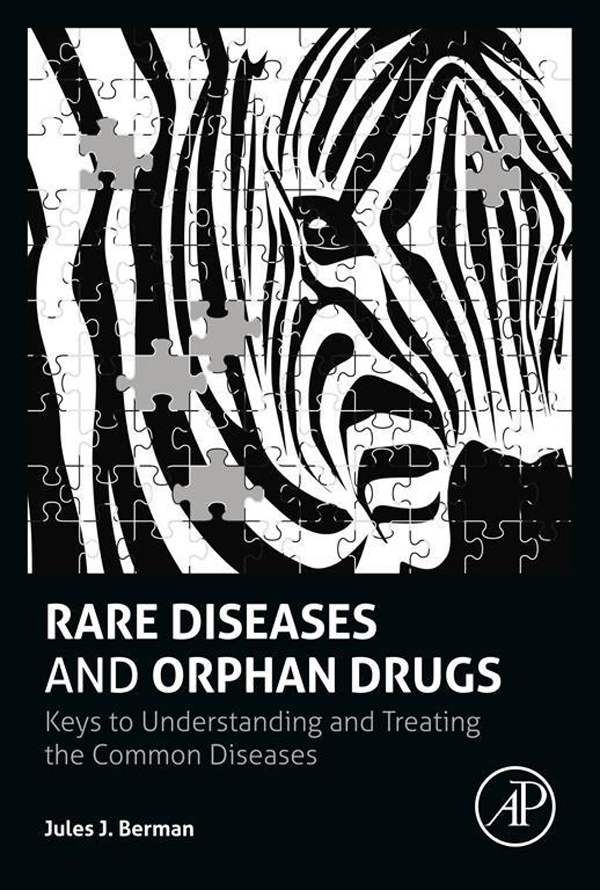Table of Contents
List of illustrations
- Figures in Chapter 3
- Figures in Chapter 4
- Figures in Chapter 5
- Figures in Chapter 6
- Figures in Chapter 7
- Figures in Chapter 9
- Figures in Chapter 10
- Figures in Chapter 11
- Figures in Chapter 13
- Figures in Glossary
Landmarks
Table of Contents
Rare Diseases and Orphan Drugs
Keys to Understanding and Treating the Common Diseases
First Edition
Jules J. Berman, Ph.D., M.D.

Copyright
Academic Press is an imprint of Elsevier
32 Jamestown Road, London NW1 7BY, UK
225 Wyman Street, Waltham, MA 02451, USA
525 B Street, Suite 1800, San Diego, CA 92101-4495, USA
Copyright 2014 Elsevier Inc. All rights reserved
Medicine is an ever-changing field. Standard safety precautions must be followed, but as new research and clinical experience broaden our knowledge, changes in treatment and drug therapy may become necessary or appropriate. Readers are advised to check the most current product information provided by the manufacturer of each drug to be administered to verify the recommended dose, the method and duration of administrations, and contraindications. It is the responsibility of the treating physician, relying on experience and knowledge of the patient, to determine dosages and the best treatment for each individual patient. Neither the publisher nor the authors assume any liability for any injury and/or damage to persons or property arising from this publication.
No part of this publication may be reproduced, stored in a retrieval system or transmitted in any form or by any means electronic, mechanical, photocopying, recording or otherwise without the prior written permission of the publisher Permissions may be sought directly from Elseviers Science & Technology Rights Department in Oxford, UK: phone (+44) (0) 1865 843830; fax (+44) (0) 1865 853333; email: for further information
Notice
No responsibility is assumed by the publisher for any injury and/or damage to persons or property as a matter of products liability, negligence or otherwise, or from any use or operation of any methods, products, instructions or ideas contained in the material herein. Because of rapid advances in the medical sciences, in particular, independent verification of diagnoses and drug dosages should be made
British Library Cataloguing-in-Publication Data
A catalogue record for this book is available from the British Library
Library of Congress Cataloging-in-Publication Data
A catalog record for this book is available from the Library of Congress
ISBN: 978-0-12-419988-0
For information on all Academic Press publications visit our website at elsevierdirect.com
Typeset by Scientific Publishing Services
www.sps.co.in
Printed and bound in United States of America
14 15 16 17 10 9 8 7 6 5 4 3 2 1

Dedication
For my mother, Ida
Acknowledgments
It is impossible to deeply understand the rare diseases, or their relationships to the common diseases, without access to the OMIM data set. OMIM, the Online Mendelian Inheritance in Man, is almost certainly the largest, best-curated, and longest-running collection of information on Mendelian disorders and disease genes. OMIM began simply as MIM in the early 1960s, a creation of Dr. Victor A. McKusick. Starting in 1966, it was printed in annual volumes. By 1998, the print version was heavier than most people could safely lift. Currently, it is available as a query engine online, and as a file that can be downloaded at no cost, and studied as a stand-alone plain-text document. The current length of OMIM is about 175 megabytes, and is curated at the McKusick-Nathans Institute of Genetic Medicine at the Johns Hopkins University School of Medicine, under the direction of Dr. Ada Hamosh. Over my career, I have spent many hundreds of hours, possibly thousands of hours, reading the OMIM file. Without this remarkable resource, I could not have written this book.
I would like to thank the entire staff at the Office of Rare Diseases at the National Institutes of Health. On two separate occasions, these defenders of orphan diseases chose to fund my projects on GIST and on borderline ovarian tumors. This support from the Office of Rare Diseases, received at a time in my career when I was vulnerable to criticism for my preoccupation with orphaned conditions, boosted my resolve and inspired me to follow a path less traveled.
Special thanks go to Mara Conner and Jeffrey Rossetti (Editorial Department), and Caroline Johnson (Production), at Elsevier, for their extraordinary care and effort on this complex book project.
Foreword
Dr. Bermans book, Rare Diseases and Orphan Drugs: Keys to Understanding and Treating the Common Diseases, addresses a topic of great importance at this particular moment in research history. Recent advances in the molecular biology of disease have taught us that the genetic changes in the common diseases are complex and that there is remarkable variation among affected individuals in the clinical presentation and in the genetic signature of common diseases. Research scientists are beginning to recognize that the common diseases are best conceived as aggregates of many different rare diseases. To benefit from our newly acquired knowledge of the genetics of common diseases, we will need to understand how treatments for the rare diseases will apply to subsets of the common diseases.
Breakthrough discoveries among the rare diseases are now viewed as opportunities to understand and treat the common diseases. Hence, there is an increasing emphasis, coming from government, academia, and private research organizations, to increase funding for rare diseases research and orphan drug development.
Worldwide, orphan drugs are being developed and approved at a rapid rate. In the United States, expedited programs adopted by the FDA should continue to move potential products through the research and development continuum toward approval for safe and effective products. Streamlined programs such as Fast Track, Breakthrough Therapy, Accelerated Approval, and Priority Review bring optimism to patients and their families for the quick approval of new products. Additional regulatory approaches and incentives have been expanded and include the rare pediatric and tropical diseases priority review vouchers. Repurposed products now qualify for orphan product incentives at the FDA. Compounds included in the Best Pharmaceuticals for Children Act program are eligible for a 6-month extension to existing exclusivity as an incentive to expand the indications for use from the adults to the pediatric population. For antibiotics, a newer incentive program, Generating Antibiotic Incentives Now (GAIN), and authorizing legislation add 5 years to existing exclusivity for products considered new chemical entities and those included under the Orphan Drug Act. The FDA now uses expert consultants to facilitate applications for orphan drugs while still in the pre-approval stage. The success of clinical trials for orphan drugs can be credited, in no small part, to the willingness of individuals with rare diseases to participate in clinical trials.








